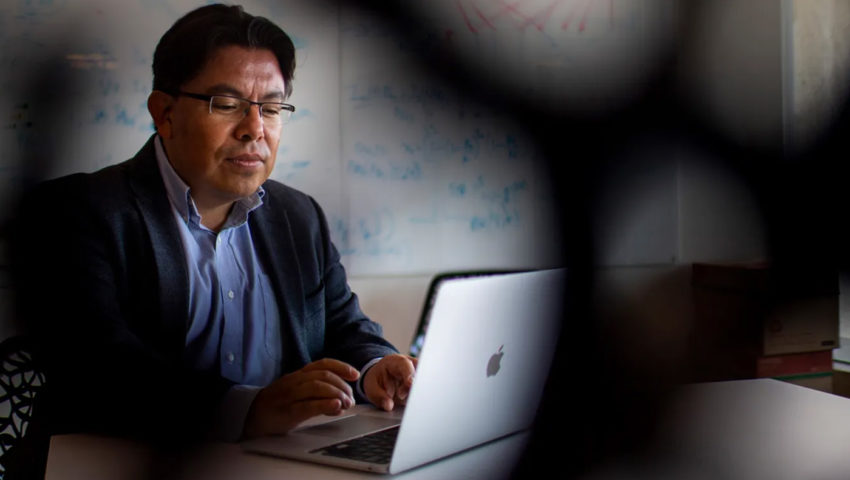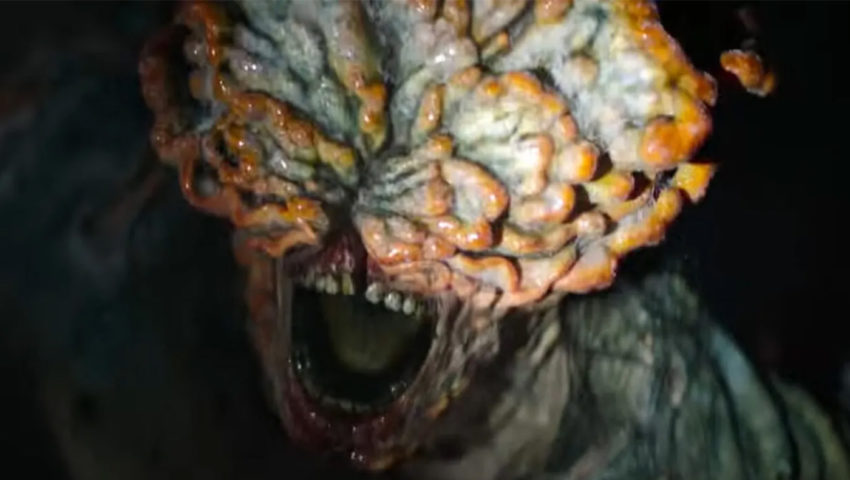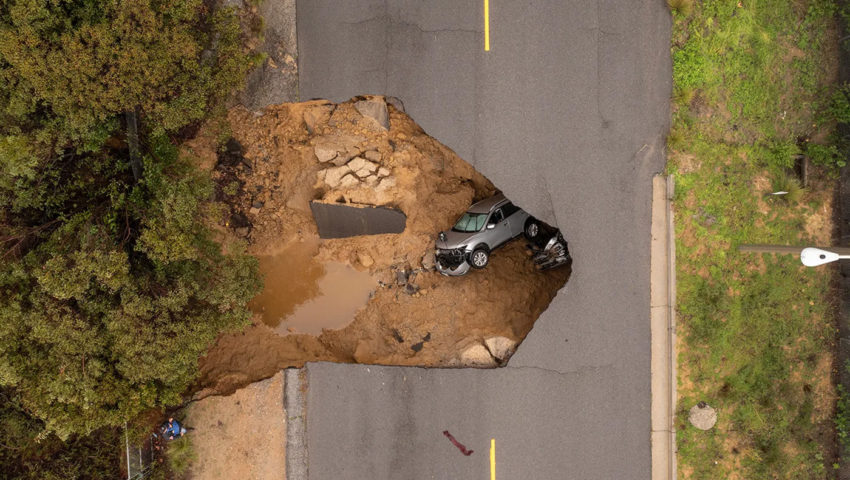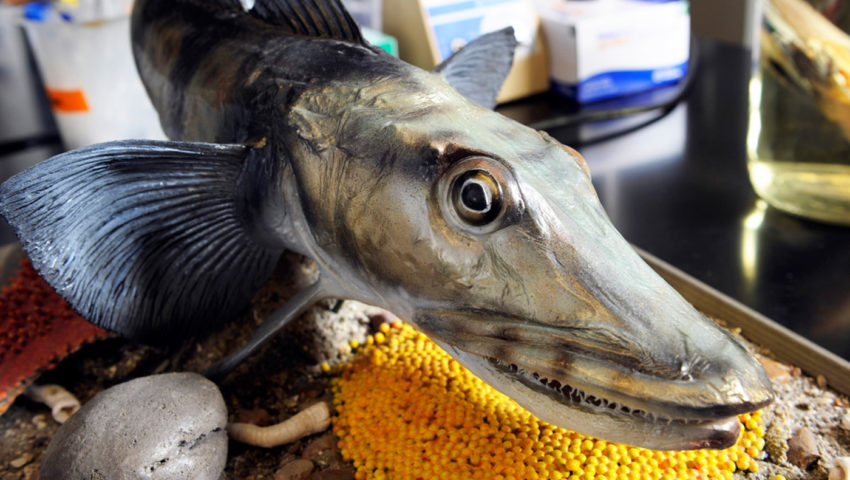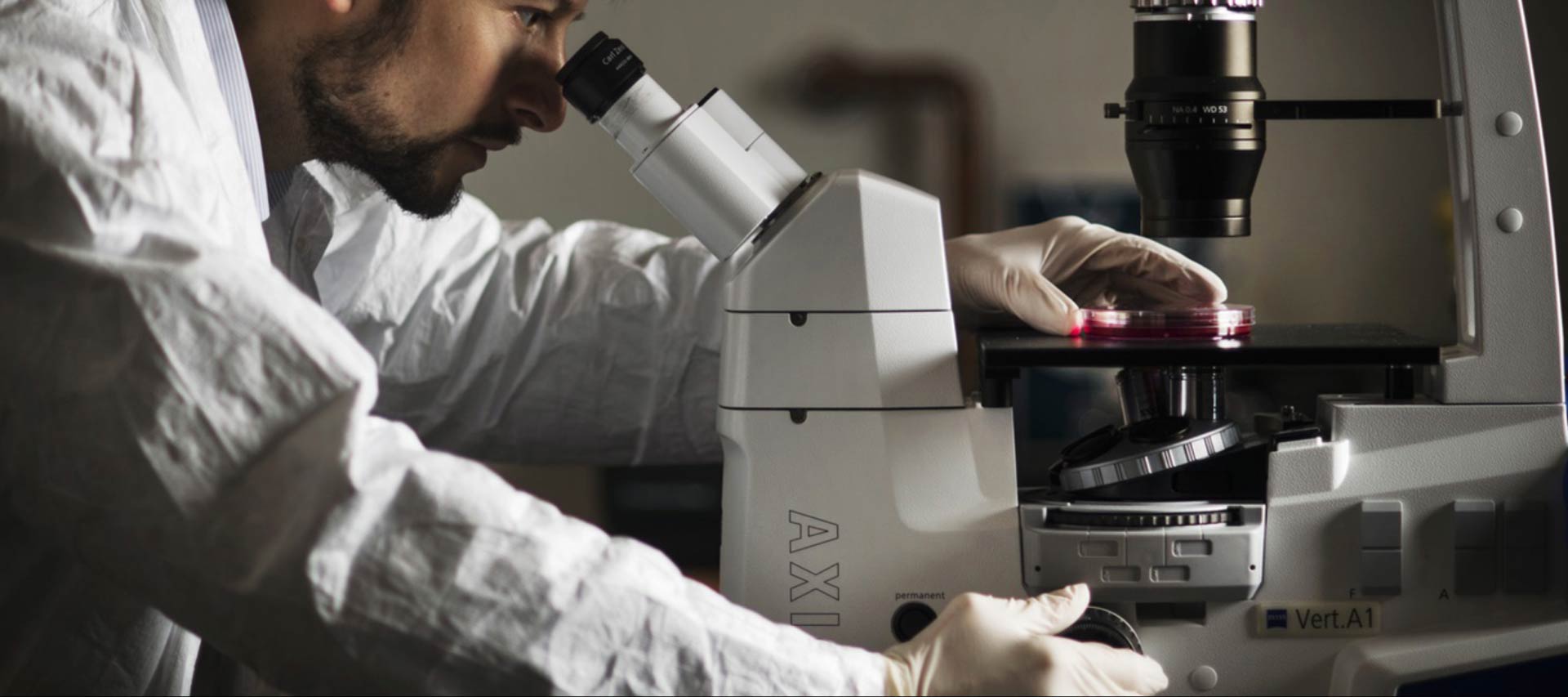
People
We are teachers, leaders, researchers, advisors, business professionals and students. Welcome to Northeastern’s College of Science
News
Can ‘digital traces’ from internet searches and social media predict outbreaks of COVID-19?
Your Google searches and Twitter accounts alert marketers about what items you might like to purchase—could they also serve as an early warning system when COVID-19 levels are about to take off?
A team of scientists including Northeastern University machine learning expertMauricio Santillanasays internet users’ “digital traces” can be adopted to alert public health officials to sharp increases in COVID-19 at the county level one to six weeks ahead of a major outbreak.
In a paper published Wednesday, Jan. 18, in Science Advances, Santillana and other authors saydigital data will help close information gapsleft by existing surveillance methods.
Analysis of the data streams will allow policymakers to get a jump on decisions such as whether to reissue masking recommendations or bump up vaccination and boosting campaigns, says Santillana, director of the Machine Intelligence Group for the Betterment of Health and the Environment at the Network Science Institute at Northeastern
“我们希望做的是使用相同的information that Google or Amazon or any of these big firms use to send ads to you” to inform public health decisions early on in an outbreak, Santillana says.
COVID-19-related数字流包括互联网searches for fever, clinician searches for COVID-19 treatments and Twitter users’ comments about being too sick to work, among other things.
的researchers also used machine learning methods that took historic information from outbreaks in 97 U.S. counties from Jan. 1, 2020, and 2022 and combined them to create a single predictive indicator.
“The goal is not necessarily to quantify how many infections there are but to quantify when sharp increases in infections will happen,” says Santillana, who participated in the research with scientists from Boston Children’s Hospital, Harvard Medical School, Oklahoma State University and other organizations.
Researchers found that the predictive capacity at the state and county levels was roughly similar—the early warning system deployed at one to six weeks in advance at the county level and four to six weeks at the state level.
的study says the digital data will help fill in vital missing information for the Centers for Disease Control and Prevention, which it says has failed to reliably forecast “rapid changes in the trends of reported cases and hospitalizations.”
“When CDC COVID-19 forecasts were shared with the public, they very frequently missed the timing of when outbreaks were starting,” Santillana says. He says by the time actual case numbers were tallied, surges were already well under way.
“The next chapter would be for the CDC to say, ‘We know that this is an alternative and complementary way to anticipate outbreaks. We will implement it inhouse, and we will have it as an additional tool in our toolbox,” Santillana says.
“He says the study is part of a new CDC initiative started by President Biden called the Center for Forecasting and Outbreak Analytics within the CDC.”
“It is within that effort that we did the work in this paper,” published in an open access journal of the American Association of the Advancement of Science, Santillana says.
He says he and his team already had been working with the CDC for three to four years on predicting flu incidence and flu hospitalizations, but he wasn’t satisfied with what he considered the CDC’s inability to incorporate novel Internet-based sources of information into their prediction systems.”
“When COVID hit, they called and said, ‘We need all hands on deck. So please do what you can.’”
“I asked if they could be flexible, because my team and I were interested in innovating rather than just continuing to implement the exact same models,” Santillana says.
“The model is not perfect,” he says
的counties studied were only a fraction of the 3,006 counties in the United States, according to the paper on using digital traces to build prospective and real-time county-level early warning systems.
“Our internet search-based methods may struggle to perform well in areas with poor literacy rates and limited access to internet resources,” the paper says.
的researchers say a possible solution for counties with poor internet access or literacy challenges may be to use state-level early warning systems to guide county-level decisions around outbreaks.
“When we navigate the internet on our computer or phone it leaves traces,” Santillana says.
“Whether we like it or not, the reality is that most companies use this information to increase their profit or their margins,” he says.
“Instead, we want to use that information to inform public officials when the next outbreak will happen.”
This article originally appeared on Northeastern GlobalNew
Photo by Matthew Modoono/Northeastern University
的fungal zombies in HBO’s ‘The Last of Us’ are based on real, horrifying biology
In the premiere of HBO’s big budget video game adaption “The Last of Us,” a scientist on a 1960s Dick Cavett-like talk show raises the idea that a fungal, not viral, infection will spell the end of humanity. On the surface, it’s laughable, and the idea is met with bemused laughter by the host and audience.
But as the scientist explains his theory, the energy in the room slowly shifts from amusement to horror. All it would take is for one gene in a fungus to mutate and suddenly it “could become capable of burrowing into our brains taking control not of millions but billions of us,” he says. “Billions of puppets with poisoned minds, permanently fixed on one unifying goal: to spread the infection to every last human alive by any means necessary.”
的scientist goes on to say there are no treatments or cures for this kind of infection. There’s only one possible conclusion: “We lose.”
In the world of “The Last of Us,” those words are prophetic. In 2003, a fungal infection ravages the world, turning humans into ravenous, mind-controlled zombies. HBO’slatest hit, and the game that it’s based on, might sound like pure science fiction, but it’s actually based on real, horrifying science.
的developer behind “The Last of Us,” Naughty Dog, took inspiration for its fungal zombies from the cordyceps fungus. A kind of parasitic fungus that infects insects and, in some cases, plants, it’s nature’s zombifying agents
的spores dispersed by the cordyceps sit in the soil and attach to the bodies of insects. Over the course of 24 to 48 hours, the parasite grows into the body of the insect, before spreading throughout the body over the course of a few weeks.
“It already starts changing the neurobiology of the host so that it basically makes it a zombie organism, meaning this parasite takes over, producing some kind of neurotoxins or neuromodulators that change the behavior of the host,” saysRebeca Rosengaus, associate professor of marine and environmental sciences at Northeastern.
的parasite surrounds the muscles of an insect, affecting its motor neurons and turning the host into a marionette. David Hughes, an entomologist who consulted on “The Last of Us” game, says there are clear similarities between the fictional infected and how the parasite operates in the ants he studied.
At first, infected humans in “The Last of Us” don’t immediately display signs of infection. However, that quickly changes. They start twitching and become hyperaggressive and overly energetic. Survivors in “The Last of Us” call those infected in this stage “runners.”
这种行为是建立在现实中,休斯says. The cordyceps parasite releases a chemical compound that causes insects to twitch and convulse.
“They do not enter the brain, but what they do is push chemicals into the brain across the blood-brain barrier so that they can control the brain at a distance,” Hughes says.
Ants infected with the cordyceps parasite also start becoming more antisocial, a notable shift in highly social ant societies, and wander off from the rest of the colony. Similarly, the show’s infected humans lose all ability to speak and, instead, scream and shriek in rage and pain.
But the parasite isn’t just forcing the host to wander mindlessly. There’s intent and purpose behind where infected ants—and their fictional counterparts—roam.
Ants are very adept at detecting infected members of their colony through changing chemicals and scents. If an ant is sick, it is killed and its body is deposited outside the colony. In order to circumvent that, the parasite needs to make its host die outside the colony if it has any hope of infecting more hosts.
这体现在行为称为峰会。的infected host will climb to a certain height before lodging its mandibles in a branch, stem or leaf. Up until this point, the host was still alive but totally unable to control its movement. However, at this point, the fungus starts eating the host alive from the inside before sprouting a long tendril-like stalk with a “fruiting body” that disperses spores. From on high, the spores catch on the wind and can infect an even larger area.
“The ants are forced every day to go out looking for food, so as they go out, they walk underneath a sniper’s alley of their dead siblings, which are hanging underneath the underside of the leaf, producing spores,” Hughes says. “You can imagine a dome of death which is surrounding the colony that the ants have to pass through every day, and this is why the fungus is winning.”
Although the 2013 video game featured spores as a method of infection, HBO’s adaptation of the “The Last of Us” hasdone away with them, marking the biggest departure from its scientific inspiration.
As for whether we’ll ever have to face a fungal zombie outbreak, Hughes says there’s no reason to worry. The motor systems of ants and humans are different enough that the cordyceps can’t make the leap into humans—but that doesn’t mean fungi can’t affect our behavior or even infect our bodies.
LSD is, of course, derived from hallucinogenic fungi. But other kinds of fungi can have a much more dangerous effect. The coccidioides fungus causes a condition called Valley Fever when inhaled and has been found, notably, inCalifornia prisons.
In 2022, the World Health Organization released its first list of health-threatening fungi, which included 19 fungi that “represent the greatest threat to public health.” According tothe report, fungal infections kill about 1.6 million people per year and present a particular danger for severely ill patients who are already immunocompromised. The frequency and geographic range of fungal diseases are also on the rise, due to global warming and an increase in international travel and trade.
“Emerging from the shadows of the bacterial antimicrobial resistance pandemic, fungal infections are growing, and are ever more resistant to treatments, becoming a public health concern worldwide,” says Dr. Hanan Balkhy, WHO’s assistant director of antimicrobial resistance
While fungal infections are becoming more common, the idea of a fungal apocalypse is still the stuff of science fiction, Hughes and Rosengaus agree. However, Rosengaus says fungal parasites can still provide a new lens through which to look at more common viral infections like the flu or even COVID-19. There’s a reason we sneeze and cough while we have the flu.
“The word that we call ‘symptoms,’ yes, they’re symptoms of the disease, but the question I think is interesting to ask is, are these symptoms really the reflection of the [virus] manipulating our physiology, our behavior, in order to be more helpful in transmitting the disease?” Rosengaus says. “It’s astonishing the kind of evolutionary back and forth that these parasites have been able to manage in order to manipulate the behavior of the host.
This article originally appeared on Northeastern GlobalNews.
Photo By HBO Max
What are atmospheric rivers? Will climate change make them worse?
High above California, flowing streams of vapor called atmospheric rivers are responsible for unleashing record rains and deadly floods that have put millions of people under an evacuation order.
As the state braces for another round of atmospheric rivers over the next week, experts from Northeastern University explain the science behind the weather event and whether climate change and global warming will increase the intensity of rainfall associated with these rivers in the sky.
Atmospheric rivers are responsible for ferrying fresh water from the warm tropics eastward to the Western United States, where the associated vapors condense into rain and sometimes snow.
的‘Pineapple Express’
“There are these ribbons of very moisture laden air that extend out of the tropics,” saysSamuel Munoz, assistant professor of marine and environmental science at Northeastern’s Marine Science Center andCoastal Sustainability Institute.
“When they collide with a coast, that’s the dominant mechanism by which California and much of the Western U.S. and Pacific Northwest in Canada get rain,” he says.
Because the atmospheric rivers originate in Pacific tropic areas such as Hawaii, meteorologists dub them “the Pineapple Express,” says Lindsay Lawrence, a Northeastern Ph.D. student who has bachelor’s and master’s degrees in meteorology.
“Generally speaking, atmospheric rivers are most extreme during winter months, December, January and February,” Lawrence says.
Even in a normal season, atmospheric rivers can wreak havoc.
Capable of being 300 miles wide and thousands of miles long, the moisture-laden streams can carry many times the volume of water of the Mississippi River, saysAuroop Ganguly, director of theSustainability & Data Sciences Laboratoryat Northeastern.
“When these massive waterfronts—the largest transporters of freshwater on the planet Earth—hit land, they usually result in massive rain and snow events leading often to devastating floods.”
Not all atmospheric river events are catastrophic, but events such as the Pineapple Express have the ability to dump an immense amount of rain and snow in a short amount of time, according to theNational Oceanic and Atmospheric Administration.
“We’ve had six storms in the last two weeks. This is the kind of weather you would get in a year and we compressed it just into two weeks,” California Lt. Gov. Eleni Kounalakis said Wednesday, according toCNN, which reported that four more atmospheric rivers are supposed to hit the state in the next week or so.
的new events are on top of the five that have already occurred and been associated with the deaths of 19 people, including a 5-year-old boy swept away in flood waters.
“They have come one after another,” Munoz says. “That’s causing really huge amounts of water to be delivered all at once.”
的impact of climate change
Atmospheric rivers may deliver even more rain in the future, scientists say.
“Ongoing research suggests that they may get more intense in climate change,” Ganguly says.
As the atmosphere warms, it holds more moisture, Munoz says. As with hurricanes, some research associates the increased moisture to heavier rainfalls.
Other scientists are looking into whether climate change is associated with changes in where atmospheric rivers make landfall, possibly moving southward, Munoz says.
Atmospheric rivers have cold fronts and warm fronts located off a low pressure center, Lawrence says.
As the rivers stream westward, the cold front tries to catch up to the warm front, forming a narrow band of water vapor, she says.
If the location of the low pressure shifts, the entire system will move around, Lawrence says. “To know where they are going to move is unfortunately hard to say right now.”
Munoz says it appears that catastrophic atmospheric river events occur every 100 to 200 years, with the phenomenon contributing to the Great Flood of 1862. The flood is believed to have killed 4,000 people in California according toUSA Todayand other sources.
Wildfires and drought are making floods worse
的current flooding in California is being aggravated by historic wildfires and drought that are tied to climate change themselves.
“When you burn a forest, the burning of organic compounds produces compounds that are hydrophobic, that repel water,” in the form of ash, Munoz says.
When rain falls on the ash it is less likely to seep into the soil and recharge into groundwater and more likely to run off toward streams and rivers and lakes, he says.
的runoff contributes to flooding, Munoz says.
Drought also poses a flooding risk because the soil can get so dry it loses its ability to absorb water, sort of like a too-dry sponge, he says.
“When they’re super dry, their ability to take up moisture is reduced.”
Planning for the future
“California is sort of this world of extremes,” Munoz says.
“They do have prolonged periods of drought, and that’s getting more severe. But they also have this history of really severe atmospheric river events that cause flooding. It’s possible that in the future these kinds of events will become more severe.”
With access to water being such an issue in California, Munoz says he believes officials need to find ways to capture and store water during deluges as part of planning for the future.
Right now, state and local California officials are concerned about saving lives and the infrastructure.
But after the storms are over, Munoz says officials will face important and continuing questions about water supply.
“Are there ways we can store some of this water that right now there’s an abundance of but will very quickly flow back out to sea?” he asked. “Is there some way to capture that?”
This article originally appeared on[email protected]
Photo by David McNew/Getty Images
Why It’s Crucial That Scientists Lend, Not Toss, Specimens from Antarctica
Not everybody can travel to Antarctica for months at a time to study the continent’s unique ecology, flora and fauna.
Now two Northeastern University professors are among those calling for the establishment of an Antarctic biorepository to make sure that any serious researcher who wants to study the birds, animals, plants and microorganisms of the polar south gets a chance to do so.
According toDaniel Distel, director of the Ocean Genome Legacy Center, andH. William Detrich, professor emeritus at Northeastern’sMarine Science Center, the repository would help preserve a record of the rich biological diversity of the Southern Ocean and continent, which are uniquely susceptible to global warming.
的coldest place on earth, Antarctica is also the fastest warming, Distel says. He says researchers need access to biological samples from the area to learn “how global warming is affecting Antarctic species and to better understand how to protect them.”
“The biorepository will help democratize science, especially biological science,” Detrich says, adding, “There are many more scientists who want to study species in Antarctica than are able to actually get there.”
的Antarctic biorepository network would operate as a network from which people could borrow frozen tissue samples and dried biological specimens from collections across the U.S.
“People would be able to tap into a central database and find out where the materials are,” Distel says.
Detrich and Distel were among nearly two dozen scientists who contributed to a Dec. 8commentary in PNAS, the Proceedings of the National Academy of Sciences, calling for the National Science Foundation to fund an Antarctic biorepository network.
Currently, invaluable specimens are scattered across dozens of private collections and university laboratories. A few are also housed in museums.
Not only are the specimens hard to track down, Detrich says, they are in danger of being tossed when scientists retire.
在Detrich的案例中,他的冰箱生物samples—collected on more than 20 expeditions to Antarctica—were saved from the waste heap when he and Distel got the idea to establish a polar genomics collection at theOcean Genome Legacy Centerof the Marine Science Center and Coastal Sustainability Institute in Nahant, Massachusetts.
“The U.S. Antarctic program has invested millions of dollars in my research program on the ice. Those millions of dollars are now in my freezer at Northeastern,” Detrich says.
的Ocean Genome Legacy Center now houses more than 30,000 marine DNA samples, not only from Detrich’s Antarctic explorations but also from the research of ocean scientists around the world.
Researchers already are able to borrow samples from OGL, but the establishment of a national Antarctic biorepository would make the lending process easier—and more uniform, Distel and Detrich say.
“Currently, researchers make their own collections and store their materials in their own way and store data in their own way,” Distel says. Uniform standards would make the lending process easier—and increase confidence in the reliability of specimens and data.
Distel says participants in a three-day virtual workshop in February convened by Kristin M. O’Brien of the University of Alaska in the wake of the COVID-19 pandemic recognized that the lack of a biorepository was “an opportunity lost.”
“They realized that there was a vast resource out there that was not being adequately tapped,” Distel says. A white paper that came out of the workshop resulted in the PNAS opinion piece by O’Brien and Elizabeth L. Crockett of Ohio University to which Distel and Detrich also contributed.
As a subject of study, Antarctica is unique and holds important clues about the planet’s health.
的continent’s ice sheath is the largest on earth and contains 90% of the world’s ice in addition to 70% of its fresh water.
As the continent and its ocean warm faster than any other place on earth, the clock is ticking on opportunities to study its biodiversity, most of which consists of marine life, Distel and Detrich say.
“We need to be able to predict what kind of changes will occur to the biology of the ecosystem,” Detrich says.
“What kind of predictions can we make about the future of the food web in the Southern Ocean? Are some animals or phytoplankton more sensitive than others? If we have genomic resources, we can study these processes very closely, very carefully,” he says.
的re is much to be discovered about life forms in Antarctica, Distel says.
“We know that there are threats facing all these organisms, but we haven’t completely cataloged what’s out there,” he says.
“A lot of what’s out there is still unknown, so there’s the risk of losing things before we’ve even learned they exist.”
Teaching responsibilities and lack of research funds keep many would-be Antarctic researchers—especially those who are young or from underrepresented communities—from studying the fauna of the polar south “on the ice,” as Detrich words it.
Detrich’s expeditions to Antarctica, which started in 1981, typically lasted from two to three months due to both the demands of his research and the limited window of time in which to travel by ship across unfrozen seas to his main base at Palmer Station.
“Palmer Station closes, going into winter operations, around the beginning of June and opens up again in early November,” which is the southern hemisphere’s spring, Detrich says.
Detrich knows full well the challenges of traveling to Antarctica.
在他的最后一次访问,2018年,他遭受了骨折hip and pelvis when large waves hit the ice-hardened ship in which he was traveling and threw him out of his bunk bed.
的rest of the group, including a Northeastern co-op student, was able to complete the expedition, but Detrich had to be flown back to the U.S. for surgery.
“Getting across the Drake Passage is no easy matter,” Detrich says. “Most people get seasick.”
的establishment of an Antarctic biorepository network would mean that researchers who can’t—or don’t want to—travel to the continent could access anything from genomic data on mollusks and icefish to tissue plugs from living whales and penguins.
的next step, Distel says, is for O’Brien and Crockett to write a proposal for funding from the National Science Foundation to cover the costs of setting up software connecting the disparate collections, hiring coordinators and establishing a catalog and shipping protocols.
“Democratizing science and rescuing retiree collections are the two big ideas behind a biorepository,” Detrich says.
This article originally appeared on[email protected]
Photo by Matthew Modoono/Northeastern University

